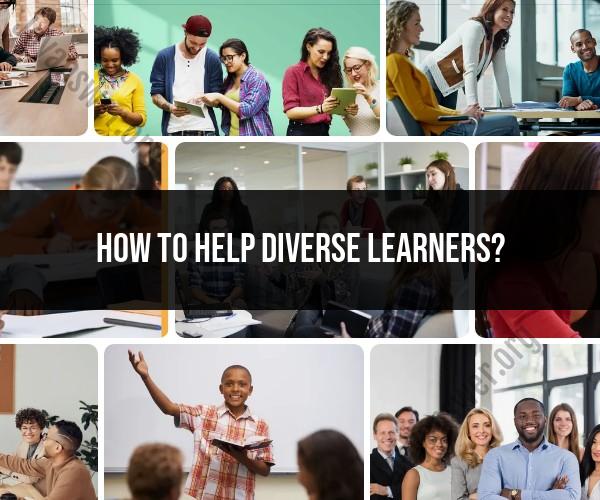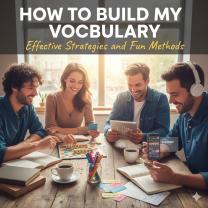How to help diverse learners?
Supporting diverse learners in the context of inclusive education is crucial to ensure that all students, regardless of their backgrounds, abilities, or needs, have access to high-quality education. Here are some inclusive education practices to help diverse learners:
Differentiated Instruction:
- Tailor your teaching methods and materials to meet the individual needs of students. This may involve providing additional support to students who are struggling or offering more challenging tasks to those who are excelling.
Universal Design for Learning (UDL):
- Utilize UDL principles to create inclusive lessons. Provide multiple means of representation, engagement, and expression, accommodating various learning styles and preferences.
Collaborative Learning:
- Encourage peer-to-peer collaboration and group work. Collaborative learning allows students to work together, share their knowledge, and learn from one another.
Culturally Responsive Teaching:
- Be aware of and sensitive to the cultural backgrounds and experiences of your students. Incorporate diverse perspectives and content that reflect various cultures and identities.
Flexible Assessment:
- Use a variety of assessment methods, such as oral presentations, written assignments, and projects, to assess student learning. Allow students to demonstrate their understanding in ways that suit their strengths.
Access to Assistive Technology:
- Provide access to assistive technology and tools that can support students with disabilities, such as screen readers, speech-to-text software, or specialized keyboards.
Individualized Education Plans (IEPs) and 504 Plans:
- If students have IEPs or 504 plans, ensure that their accommodations and modifications are implemented effectively. Work closely with support staff, such as special education teachers and counselors.
Regular Communication with Families:
- Maintain open lines of communication with students' families or caregivers. Discuss progress, challenges, and strategies to support learning both at school and at home.
Inclusive Classroom Environment:
- Foster a safe and inclusive classroom environment where students feel respected, valued, and free from discrimination. Address incidents of bullying or bias.
Professional Development:
- Continuously engage in professional development to stay informed about best practices in inclusive education, diverse learning needs, and the use of new instructional strategies and technologies.
Flexible Seating Arrangements:
- Arrange seating in a way that accommodates various learning preferences. Allow students to choose where they sit and work best, whether it's at a desk, a group table, or on the floor.
Individual Conferences:
- Hold regular one-on-one conferences with students to discuss their progress, address concerns, and set goals.
Mentoring and Peer Support:
- Implement peer mentoring or tutoring programs where more advanced students can help those who may be struggling.
Behavioral Supports:
- Provide positive behavior support strategies to address challenging behaviors and maintain a positive and inclusive classroom atmosphere.
Continuous Assessment and Feedback:
- Regularly assess student progress and provide timely feedback. This allows you to identify areas where additional support or enrichment is needed.
Supporting diverse learners requires a commitment to creating an inclusive educational environment that recognizes and values the unique needs and strengths of all students. It also involves ongoing reflection and adjustment to ensure that every student has the opportunity to reach their full potential.
Strategies for Supporting Diverse Learners in the Classroom
There are many strategies that teachers can use to support diverse learners in the classroom. Here are a few tips:
- Provide multiple means of representation. This means presenting information in different ways, such as visually, auditorily, and kinesthetically. For example, you could use pictures, videos, and hands-on activities to teach a concept.
- Provide multiple means of action and expression. This means giving students different ways to show what they know, such as through writing, speaking, drawing, and performing. For example, you could have students write a report, give a presentation, create a poster, or perform a skit to demonstrate their understanding of a topic.
- Provide multiple means of engagement. This means finding ways to motivate and engage all students in the learning process. For example, you could use cooperative learning activities, games, and real-world problems to keep students interested and motivated.
Addressing the Needs of Multilingual Students
Here are a few tips for addressing the needs of multilingual students in the classroom:
- Provide opportunities for students to use their home language. This could include allowing students to speak and write in their home language in class, or providing resources in multiple languages.
- Use visuals and hands-on activities to help students understand new concepts. This is especially important for multilingual students who may not be fluent in English.
- Provide students with opportunities to practice speaking and writing English. This could be done through class discussions, writing assignments, and group projects.
- Work with parents and guardians to support students' learning at home. This could involve providing parents with resources in their home language, or giving them tips on how to help their children with their homework.
Inclusive Education: Tips for Teachers of Diverse Learners
Here are a few tips for inclusive education:
- Create a welcoming and supportive classroom environment. This means creating a space where all students feel safe and respected.
- Get to know your students. Learn about their individual strengths and weaknesses, as well as their cultural backgrounds.
- Differentiate instruction. This means providing instruction that is tailored to the individual needs of all students.
- Use a variety of teaching methods and materials. This will help to reach all learners and keep them engaged.
- Provide students with opportunities for collaboration and cooperation. This can help students to learn from each other and to build relationships.
Individualized Education Plans (IEPs) for Diverse Learners
An Individualized Education Plan (IEP) is a document that outlines the specific needs of a student with a disability. IEPs are created by a team of professionals, including the student's parents or guardians, teachers, and other specialists.
IEPs typically include the following:
- A statement of the student's current academic achievement and functional performance
- A statement of the student's annual goals
- A description of the special education and related services that the student will receive
- A description of how the student's progress will be measured
IEPs are important for ensuring that all students, including diverse learners, have access to the education they need to succeed.
Fostering a Welcoming Classroom Environment for All Students
Here are a few tips for fostering a welcoming classroom environment for all students:
- Get to know your students and their families. This will help you to understand their individual needs and backgrounds.
- Create a classroom culture that is based on respect and inclusion. Make sure that all students feel safe and valued in your classroom.
- Use inclusive language and practices. This means avoiding stereotypes and generalizations, and using gender-neutral language whenever possible.
- Celebrate diversity in your classroom. This could involve teaching about different cultures and holidays, or inviting guest speakers from different backgrounds.
By following these tips, you can create a classroom environment where all students feel welcome, supported, and valued.












